When Britain was gripped by 'fairy mania'
"Fairycore" may be trending on social media today but 100 years ago supernatural sprites were a national obsession. Holly Williams explores fairy fever.
Imagine a fairy. Is the picture that appears in your mind's eye a tiny, pretty, magical figure – a childish wisp with insect-like wings and a dress made of petals?
If so, it's likely you've been influenced by Cicely Mary Barker, the British illustrator who created the Flower Fairies. 2023 marks 100 years since the publication of her first book of poems and pictures, Flower Fairies of the Spring – an anniversary currently being celebrated in an exhibition at the Lady Lever Gallery in Merseyside, UK.
The Flower Fairies' influence has endured: they have never been out of print, and continue to be popular around the world – big in Japan and in Italy, where Gucci released a children's range featuring Barker's prints in 2022. Billie Eilish recently had Flower Fairies tattooed on her hand, while their whimsical, floral aesthetic can be seen in the TikTok "fairycore" trend.
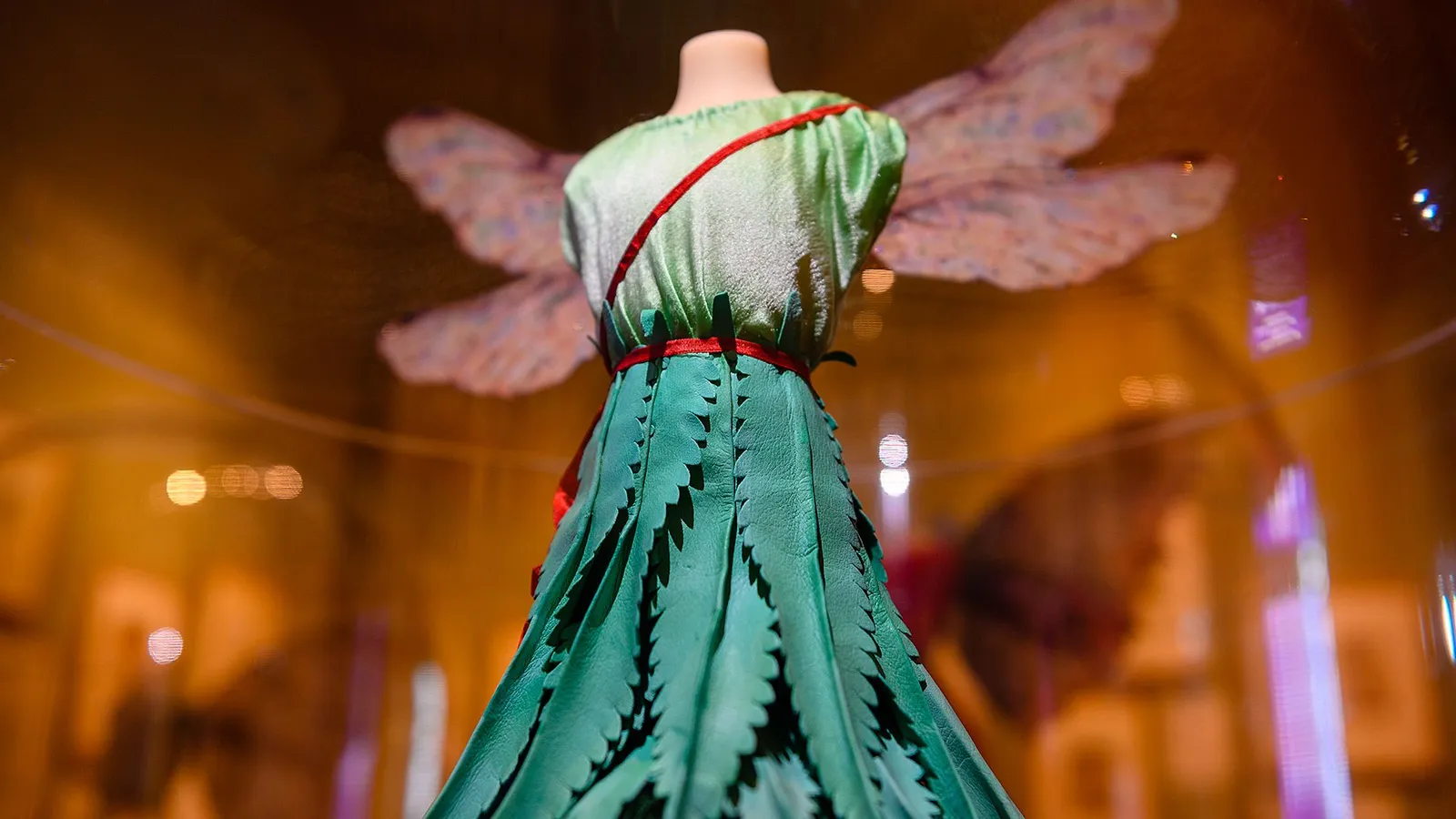
(An exhibition at the Lady Lever Art Gallery explores the Flower Fairies phenomenon, and features pantomime costumes (Credit: Pete Carr))
Barker's delicate watercolours certainly helped cement several tropes we now consider classic – almost essential, in fact – in the iconography of the fairy: they are miniature, sweet and youthful, they are intertwined with plants and the natural world, and they are distinctly twee. Yet her drawings were also "firmly footed in realism" points out Fiona Slattery Clark, curator of the show. "The children were all painted from life [and] her plants and flowers are as realistic as possible." Barker drew children from the nursery school her sister ran in their house in Croydon near London; each was assigned a flower or tree, and Barker's detailed illustrations were botanically accurate – she would source samples from Kew Gardens, says Slattery Clark. Even the petal-like wings and fairy outfits were closely based on plants: an acorn cup becoming a jaunty cap, a harebell becoming a prettily scalloped skirt.
For many hundreds of years, fairies were not necessarily tiny and fey, but grotesque or fierce elemental forces
The Flower Fairies were an immediate hit – but Barker was far from the only artist of her era to find success with fairies. In fact, fairy fever swelled within the United Kingdom for over half a century, reaching something of a peak around the time the Flower Fairies emerged in 1923. Over 350 fairy books were published in the UK between 1920 and 1925, including in Enid Blyton's first fairy foray, a collection of poems called Real Fairies in 1923. Fairy art even had the stamp of royal approval: Queen Mary was a fan of Ida Rentoul Outhwaite's ethereal drawings, and helped popularise them by sending them in postcard form.
Fairies have long been with us – in our imaginations, at least. But for many hundreds of years, they were not necessarily tiny and fey, but grotesque or fierce elemental forces, capable of great darkness. "In 1800, if you thought your child was a fairy it would have been like demonic possession – you would have put that child in the fire to drive out the fairy," points out Alice Sage, a curator and historian.
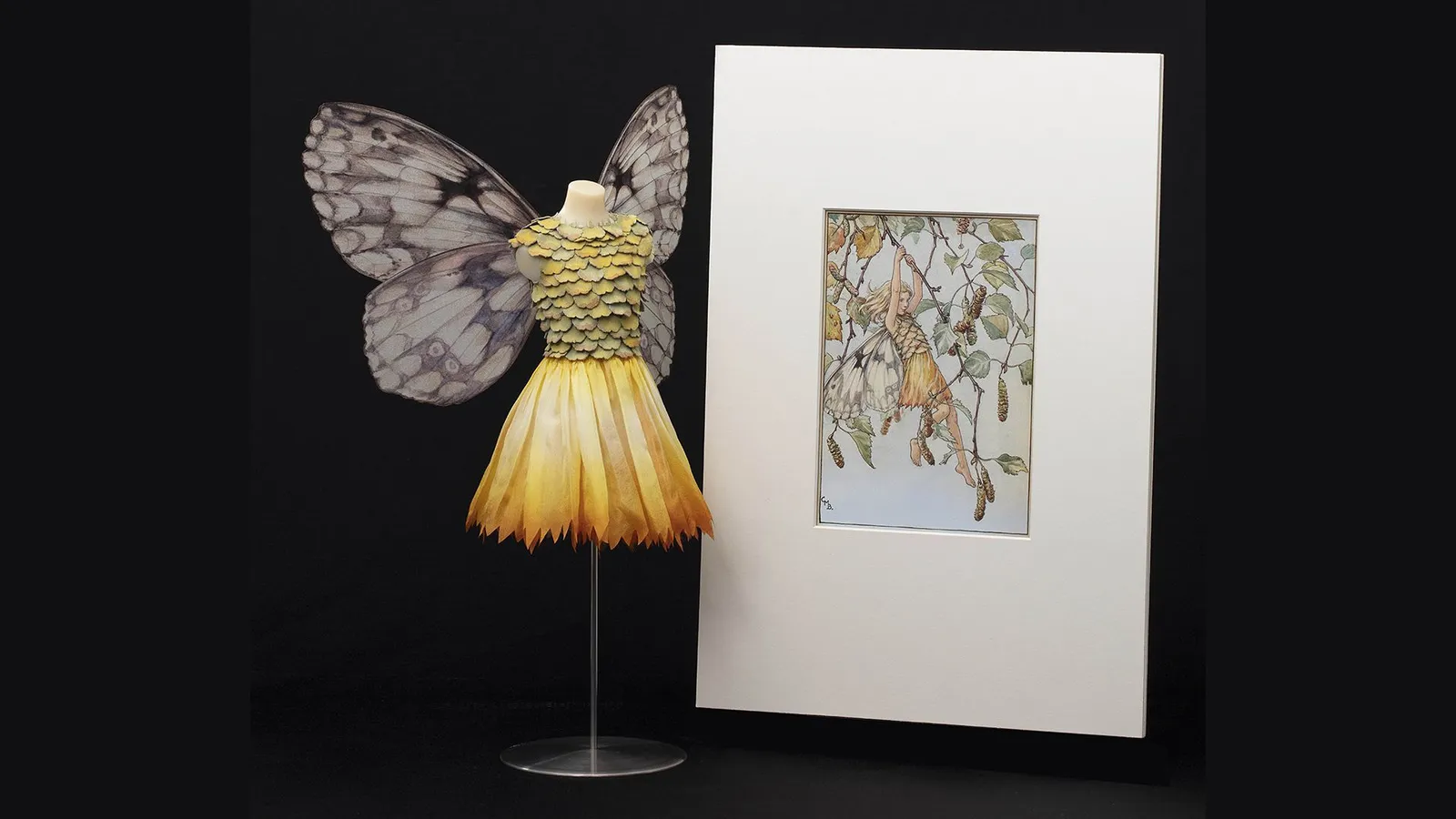
(Each of Barker's fairies corresponded to a plant, tree or flower – pictured, the Silver Birch Fairy (Credit: Estate of Cicely Mary Barker 1934 Flower Fairies))
Yet within 100 years, the whole conception of fairies completely changed. "Throughout the 19th Century, fairies became increasingly miniaturised, sapped of their power – trapped in the nursery," says Sage. As the Victorian era progressed, they are increasingly associated with childhood; as their popularity grew, they shrank.
But first, fairies became a fashionable subject for Victorian artists, often taking inspiration from Shakespeare's A Midsummer Night's Dream and The Tempest. John Anster Fitzgerald, Edwin Landseer, John Everett Millais, Joseph Noel Paton, Arthur Rackham and even JMW Turner – among many others – painted supernatural sprites from the 1840s onwards. But there was still a sense of otherworldly strangeness in many of their depictions – as seen in the work of Richard Dadd, who made his hyper-intricate fairy paintings while living in a Victorian asylum after killing his father.
Then two wider cultural developments came along that changed fairy reputations forever. One was that "children's literature happened", says Sage. The Victorians promoted the idea of childhood as a time of innocence, requiring its own entertainment. Illustrated children's books really took off from the 1870s, with fairies a staple, and increasingly cutesy, feature. The second was pantomime. "Every Victorian pantomime would have this big spectacle of transformation at the end, where children dressed as fairies filled the stage," says Sage. The standard fairy fancy dress outfit today is basically the same as what these Victorian children would have worn: think tinsel, sparkly sequins, and translucent, gauzy wings.
Huge popularity
Moving into the 20th Century, fairies showed few signs of buzzing off – if anything, they cemented their place. "In the Edwardian era, Peter Pan started to be performed [in 1904], and that carried on for the next 25 years," points out Slattery Clark – enough time for several generations of children to learn to clap their hands to show they believe in fairies.
And as the new century lurched through global upheaval via World War One, fairy mania continued – if anything, widening and deepening. "That golden age of children's literature is really an upper middle-class phenomenon," points out Sage. "What happened from World War One onwards is it explodes beyond that, and becomes an adult concern."
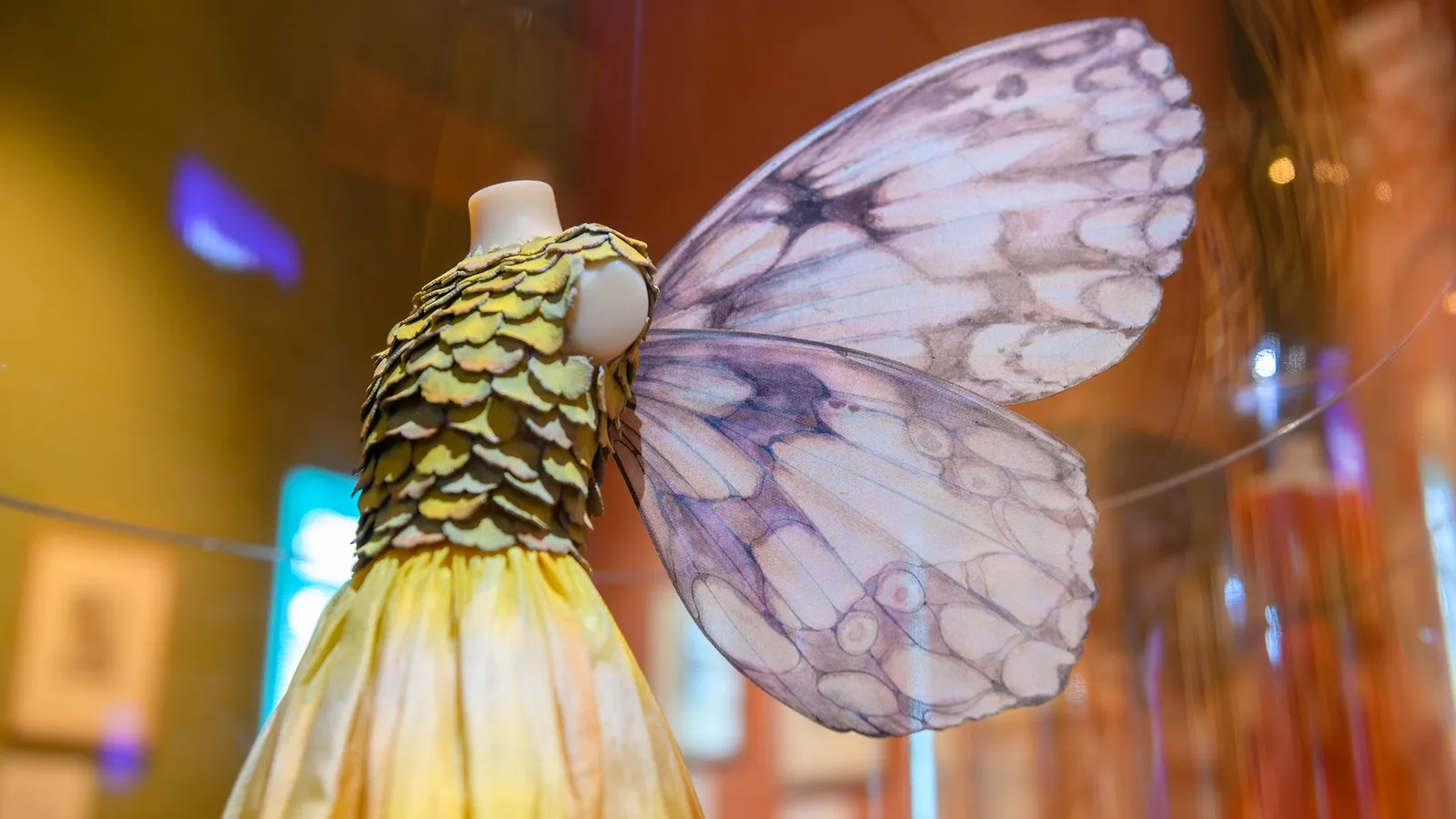
(The costumes displayed in the exhibition are based on the Flower Fairies illustrations (Credit: Pete Carr))
Having been whisked from the woods into the nursery, fairies then made their way to troubled adults on the battlefield or waiting at home. Consider the huge popularity of a print, Piper of Dreams by Estella Canziani, during World War One: a wispy image of a man playing a pipe and surrounded by tiny fairies, it sold a staggering quarter of a million copies in just 1916.
"It's about belief and it's about hope – that's what fairies represent in that time," says Sage. "The supernatural becomes a way of finding some luck and brightness, [when] people don't have control over their lives, their future, their families."
For Conan Doyle, it was all about a search for another realm of being that related to life after death, vibrations, telepathy, telekinesis – Alice Sage
Today, we associate fairies with little girls – but this was an era when fairy art was popular with grown men, too. And technology helped spread it: there was an explosion in sending postcards around this time. They were cheap to buy, and free to post to a serving soldier abroad. "Suddenly everyone can send fairies, and they're flying through the air and across the seas. You can’t underestimate the practical aspect of it," says Sage.
Indeed, Barker herself cut her teeth illustrating such postcards: she produced a patriotic series showing "Children of the Allies", in different forms of national dress, in 1915, followed by a series of characters from Shakespeare, before teasing the Flower Fairies with a set of "Fairies and Elves" postcards in 1918.
Barker never made any claims for fairies being real – "I have never seen a fairy", she wrote in a foreword to Flower Fairies of the Wayside. But it is worth noting that she first published the Flower Fairies at a moment when the desire to believe in magical beings was at a rare high. In 1920, Britain was gripped by the story of the Cottingley Fairies, after two girls claimed to have photographed fairies at the bottom of their garden in West Yorkshire – and were widely believed.
Their beautiful photographs were created by paper cut-outs, floating on hat pins. Although many were sceptical, they nonetheless also fooled many of the great and the good – the photographs were brought to prominence by no less than Sir Arthur Conan Doyle, the author of Sherlock Holmes, who wrote a whole book about it, The Coming of the Fairies, in 1922.
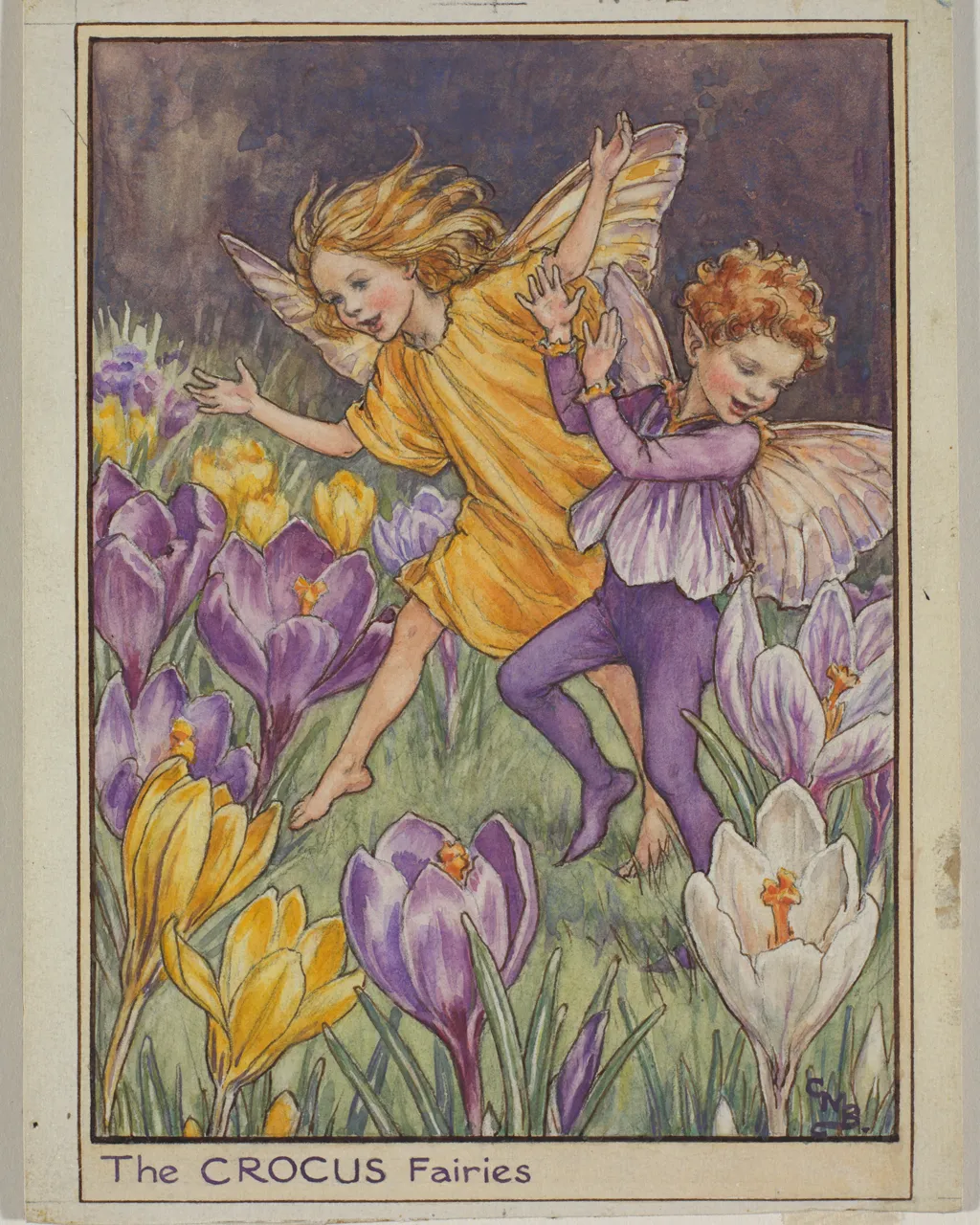
(The Crocus Fairies from Flower Fairies of the Spring – the watercolours are still popular today with “fairycore” fans (Credit: Estate of Cicely Mary Barker 1934 Flower Fairies))
Cousins Elsie Wright and Frances Griffiths were aged 16 and nine when they took the first photos. Many years later, in the 1980s, they admitted it was a hoax, explaining that they kept up the pretence that the fairies were real a because they felt sorry for the middle-aged men, like Conan Doyle, that so wanted to believe. There was, at the time, a serious resurgence in spiritualism in the UK, with seances and attempts to contact the dead proving understandably tempting for the bereaved. Conan Doyle himself became interested in a spirit world after his son died in the war. And for believers, this wasn't "woo-woo" nonsense – it was supposedly based in science. After all, scientific advances were genuinely explaining hitherto unknown and invisible aspects of our world.
"For Conan Doyle, it was all about a search for another realm of being that related to life after death, vibrations, telepathy, telekinesis – this fascinating world on the edge of the limits of human perception," says Sage. "And obviously that's connected to the loss of his son in World War One."
Like the Flower Fairies, the Cottingley photographs further reinforced the association between children and fairies, as well as cementing what a fairy looked like in the public consciousness. Yet aside from Tinkerbell, Flower Fairies are probably the only image from the fairy-fever era still instantly recognisable today. Why, of all the fairy content out there, have Barker's images endured so strongly over the past 100 years?
"They were [originally published] in full colour, and a lot of books were published in black and white," begins Sage. What looked novel at the time, now seems charmingly period – but the delicacy, intricacy, and imagination of Barker's pictures can still cast a spell. "It's like dolls houses – things that are very miniaturised, but very detailed and realistic, scratch a certain itch," suggests Sage. "They are absolutely beautiful, which helps."
"It's a real celebration of nature – there is a strong educational aspect to her work," puts forward Slattery Clark, emphasising the botanical accuracy of Barker’s drawings. The educational argument might sound absurd given we're discussing fairy art, but as a child who was obsessed with Flower Fairies, I can attest to the truth of it: all the wildflowers I know the names of I learned from these books.
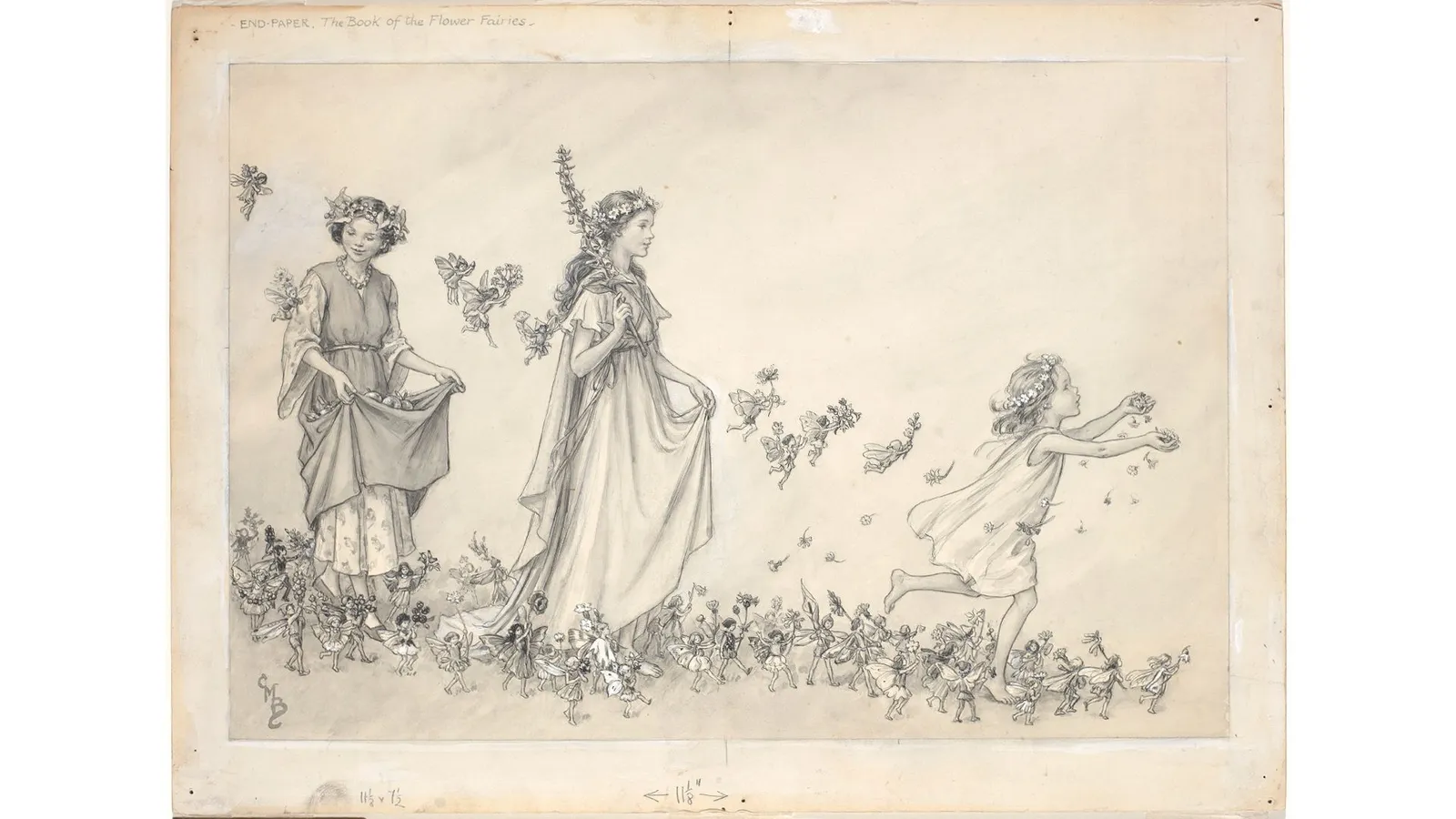
(Cicely Mary Barker's exquisite illustrations were hugely popular in the 1920s (Credit: Estate of Cicely Mary Barker))
Having each fairy very specifically related to a particular plant was also commercially canny – whether Barker intended this or not, it created space for identification, for collectability, for a kind of innate brand franchising. "In children's culture, we create series that are collectable, that you identify with… It's like Pokemon or something!" laughs Sage. "When I speak to people about the Flower Fairies, especially groups of sisters, it's always 'which one were you?'"
Still, Sage is pleased to see the Flower Fairies exhibited in a fine art context at the Lady Lever gallery. For a long time, men painting fairies has been considered art – but when women do it, it's just silly flowery stuff for children.
"This is fine art – it's mass, popular fine art," insists Sage. "I think a lot of the diminishment of fairies and children's illustration is from a misogynist, snobbish and elitist art historical tradition. I'm so excited to see this kind of exhibition, that reclaims this history." Consider this a beating of wings, then, that takes fairies back out of the nursery – and into the gallery.
Flower Fairies is at the Lady Lever Art Gallery, Port Sunlight Village, UK until 5 November.
Holly Williams' novel What Time is Love? is out in paperback now.___






If they tied a bookwyrm comments section to an ISBN number for example then anybody/site could easily have it embedded to make it a universal tool rather than specifically connected to a piracy site.